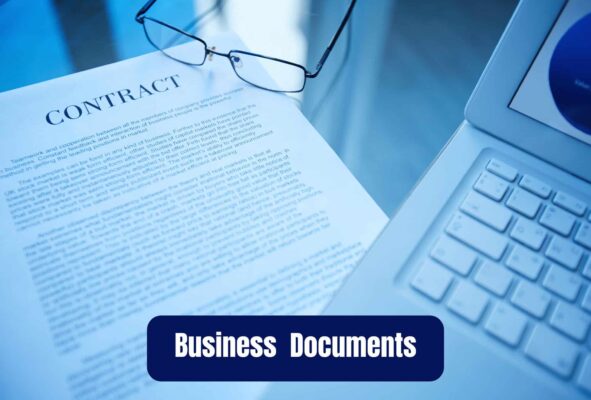Have a Big Project?
Big numbers, lots of documents and multiple translations?
Our top performing teams deliver unmatched quality on time for you
to hit your business goals.

Business documents are essential tools for organizational communication, decision-making, and record-keeping. They serve various purposes and come in different formats, each tailored to specific needs.
This article explores the types, importance, and best practices for creating effective business documents.
Financial documents provide insights into a company’s financial health and operations. Key types include:
This snapshot of a company’s assets, liabilities, and equity at a specific point in time, helps stakeholders assess financial stability.
Also known as profit and loss statements, these documents summarize revenues and expenses over a period, indicating profitability.
These track the flow of cash in and out of the business, providing insights into liquidity and operational efficiency.
These documents outline expected revenues and expenses, aiding in financial planning and resource allocation.
Legal documents ensure compliance and protect business interests. Important types include:
Legally binding documents that outline the terms of a business relationship, detailing the obligations and rights of parties involved.
These protect sensitive information by prohibiting recipients from disclosing it to unauthorized parties.
Essential for legally forming a business entity, these documents typically include articles of incorporation and bylaws.
These outline the rules and guidelines for using a company’s products or services, and protecting the business legally.
Marketing documents are crucial for promoting products and services. They include:
Informative pamphlets that showcase products or services, often visually appealing to attract customers.
Strategic documents that outline marketing goals, target audiences, and tactics for achieving objectives.
Official statements issued to media, announcing newsworthy events or changes within the company.
Creatively crafted content designed to attract customers and generate sales.
HR documents are essential for managing personnel and organizational policies. Key examples are:
Comprehensive guides outlining company policies, procedures, and employee expectations.
Detailed outlines of job responsibilities, skills required, and reporting relationships for specific roles.
Assessments of employee performance, often used for promotions and salary adjustments.
also you can find more information about Document Translation Services
Documents related to employee compensation, tax withholding, and compliance with employment laws.
These documents help in the smooth functioning of business processes. They include:
Step-by-step instructions for routine operations, ensuring consistency and efficiency.
Records of maintenance activities for equipment and facilities, crucial for operational reliability.
Documents that track inventory levels, helping businesses manage stock efficiently.
Sales documents are vital for managing sales processes and transactions. Important types include:
Summaries of sales activities, typically used for performance evaluation and strategy adjustment.
Requests for payment from customers, detailing products/services provided and payment terms.
Documents outlining service offerings and pricing to potential clients.
Formal requests to suppliers for the purchase of goods or services.
Strategic documents guide long-term business planning. Key examples are:
Comprehensive documents outlining a company’s vision, objectives, and strategies for growth.
Research documents that provide insights into market conditions, competition, and consumer behavior.
Evaluations of a company’s strengths, weaknesses, opportunities, and threats, aiding in strategic planning.
Clearly defined targets that guide the organization’s direction and decision-making.
Memos and emails promote clarity and information sharing among employees and departments.
Customer letters and announcements help businesses engage with clients and the public.
They are essential for maintaining:
Ensuring adherence to laws and regulations.
Supporting accurate financial reporting.
Providing a track record for future reference and auditing purposes.
Business documents support informed decision-making through:
Offering insights for management decisions.
Informing product development and marketing strategies.
Identifying and mitigating potential risks.
They are crucial for:
Helping define the future direction of the organization.
Outlining approaches for expansion and market penetration.
Ensuring efficient use of resources across the organization.
Effective business documents should maintain:
Ensuring consistency and professionalism.
Where applicable, using precise legal terminology.
Following a uniform style throughout documents.
Key to credibility, documents must feature:
Ensuring accuracy in financial reporting.
Adhering to relevant laws and regulations.
Making information easily understandable.
Protecting sensitive information involves:
Implementing measures to safeguard confidential data.
Ensuring that sensitive information is handled appropriately.
Utilizing secure methods for document sharing.
To ensure accountability, documents may require:
Securing sign-off from executives or department heads.
Involving auditors or legal advisors for compliance checks.
Documents may be distributed to:
Ensuring all staff have access to necessary information.
Facilitating collaboration and information sharing.
Keeping key stakeholders informed of important developments.
Sharing documents with:
Clients: Providing necessary documentation for transactions.
Partners: Ensuring collaborative efforts are documented.
Vendors: Managing procurement and supply chain relationships.
Methods
Common methods of distribution include:
Email: A quick and efficient way to share documents.
Cloud Sharing: Platforms like Google Drive or Dropbox for collaborative access.
Physical Copies: Necessary for legal documents requiring signatures.
Essential for creating text-based documents:
Microsoft Word: is a popular program for generating various types of documents.
Google Docs: A collaborative platform for real-time editing.
Adobe Acrobat: Ideal for creating and editing PDFs.
Spreadsheet Tools
Microsoft Excel: Powerful tool for calculations and data manipulation.
Google Sheets: An online alternative for collaborative spreadsheet work.
Used for visual presentations:
Microsoft PowerPoint: Commonly used for creating engaging presentations.
Google Slides: An online tool for collaborative presentations.
Specialized Software
Designed for specific business needs:
Contract Management Systems: Software to streamline contract creation and tracking.
Document Management Systems (DMS): Solutions for organizing and managing business documents.
Business documents are foundational elements of effective communication and operational success in any organization. By understanding their types, importance, and best practices, businesses can create documents that not only convey information but also support strategic goals and foster positive relationships. Investing time in developing well-crafted business documents pays off in terms of clarity, professionalism, and efficiency.
Contact us now.
Big numbers, lots of documents and multiple translations?
Our top performing teams deliver unmatched quality on time for you
to hit your business goals.
Ready to burst your borders and need work done quickly?
Order Now! To get an instant assessment and quote.
Don’t wait, we’re ready.
SAVE TIME & MONEY!
Order from our mobile app now